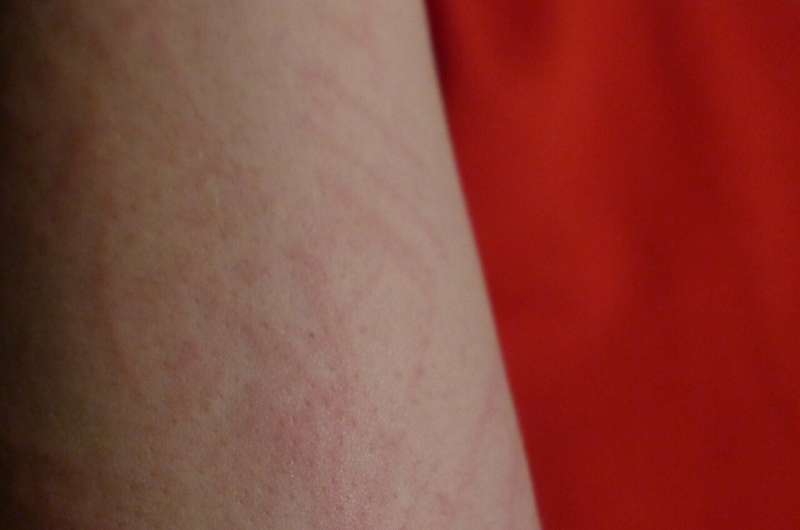business computer home pharmacy

New research presented at EADV 30th Congress today unveils key insights on the characteristic differences in chronic spontaneous urticaria (commonly presented as hives) in children versus adults. The findings reveal chronic spontaneous urticaria is less severe in children than in adults, with lower rates of angioedema and thyroid autoimmunity, supporting the idea that different management strategies may be required.
There is high prevalence of both acute and chronic urticaria in the general population, though the risk factors are unknown. Urticaria is characterized by a raised itchy rash (commonly known as hives) and occasionally angioedema, ibuprofen inflammation acne which is the rapid swelling of the skin. In chronic spontaneous urticaria (CSU) there is no specific cause or trigger, but hives are present on most days of the week, for six weeks or more.
Previously, it was thought that children were more likely to experience acute urticaria rather than chronic urticaria, but this study crystalises recent evidence to suggest that chronic urticaria is a common problem that affects children. There are also disparities between adults and children in terms of response to treatment, autoimmunity and disease course.
“CSU is a common disease found in both children and adults, though there are differences between the two patient populations with respect to medical origins and other co-existing diseases,” explains Professor Emek Kocaturk, Koc University Hospital in Istanbul, Turkey. “Our research is focused on identifying these differences to help inform future treatment of chronic spontaneous urticaria and to provide more information on the effects of CSU on children—something which has previously been neglected in this field of research”.
A retrospective analysis of 755 CSU patients (171 children, 580 adult) was conducted, with a comparison of the data performed to determine distinct characteristics between pediatric versus adult CSU patients. Findings of the study include shorter disease duration (10.0±18.2), lower occurrence of angioedema (21.8% vs 59.8%; p<0.001) and thyroid autoimmunity (8.9% vs 25.4%; <0.001) in the pediatric group vs. adult group. Moreover, pediatric CSU patients were found to respond better to antihistamines than adult CSU patients.
Resistance to antihistamines was associated with anti-TPO (the most common anti-thyroid autoantibody) positivity (p=0.02), presence of angioedema (p=0.01) and eosinopenia (an indicator of blood disorder; p<0.001) in the pediatric group while it was only associated with eosinopenia (p=0.03) in the adult group.
Source: Read Full Article
